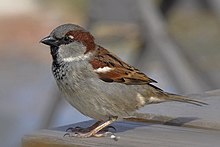Pygostylia
| Pygostylia | |
|---|---|

| |
| Confuciusornis sanctus | |

| |
| Passer domesticus | |
| Classificação científica | |
| Domínio: | Eukaryota |
| Reino: | Animalia |
| Filo: | Chordata |
| Clado: | Dinosauria |
| Clado: | Saurischia |
| Clado: | Theropoda |
| Clado: | Avebrevicauda |
| Clado: | Pygostylia Chatterjee, 1997 |
| Subgrupos[2] | |
| |
Pygostylia é um grupo de aves que contém a família Confuciusornithidae e todas as aves mais derivadas (Ornithothoraces). Seu nome provêm da presença do pigóstilo, uma característica compartilhada por todos os seus membros. Chatterjee (1997, 1998) definiu a Pygostylia como "o ancestral comum do Iberomesornis romerali e dos Neornithes",[3][4] sendo assim sinônimo do Ornithothoraces "sensu" Chiappe (1996).[5] Logo, a definição de Chatterjee foi efetivamente abandonada. Chiappe (1997) definiu a Pygostylia como "o ancestral comum da Confuciusornithidae e Neornithes (Ornithurae) mais todos seus descendentes". Esta é uma definição "node-based"[6]
Chiappe (2001) reuniu os Pygostylia por possuirem quatro sinapomorfias: presença do pigóstilo, ausência do hiposfeno-hipantro; púbis retrovertido e separado do eixo principal do sacro por um ângulo de 45 a 65 graus; e presença de um côndilo bulbar medial no tibiotarso.[7]
Referências
- ↑ Wang M., Wang X., Wang Y., and Zhou Z. (2016). A new basal bird from China with implications for morphological diversity in early birds. Scientific Reports, 6: 19700. doi:10.1038/srep19700.
- ↑ O’Connor, J.K., Wang X., Zheng X., Hu H., Zhang X., & Zhou Z. (2016). An Enantiornithine with a Fan-Shaped Tail, and the Evolution of the Rectricial Complex in Early Birds. Current Biology, 26(1): 114-119.
- ↑ CHATTERJEE, S. The Rise of Birds: 225 Million Years of Evolution. Johns Hopkins University Press, Baltimore, 1997
- ↑ CHATTERJEE, S. (1998). The avian status of Protoavis. Archaeopteryx 16: 99-122
- ↑ CHIAPPE, L. (1996). Late Cretaceous birds of southern South America: anatomy and systematics of Enantiornithes and Patagopteryx deferrariisi. In: Arratia, G. (ed.), Contributions of Southern South America to Vertebrate Paleontology, Muncher Geowissenschaftliche Abhandlungen, Reihe A, Geologie und Palontologie 30. Verlag Dr. Friedrich Pfeil, Munich.
- ↑ CHIAPPE, L. (1997). The Chinese early bird Confuciusornis and the paraphyletic status of Sauriurae. Journal of Vertebrate Paleontology 17 (3): 37A.
- ↑ CHIAPPE, L. Basal bird phylogeny In: Chiappe and Witmer (eds.). Mesozoic Birds: above the heads of dinosaurs. University of California Press, 2001.
Text is available under the CC BY-SA 4.0 license; additional terms may apply.
Images, videos and audio are available under their respective licenses.

















